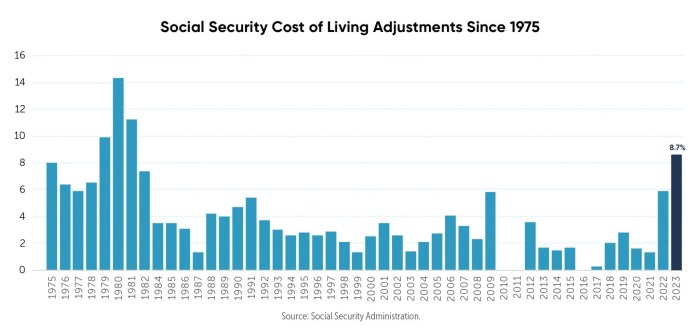Diving into the realm of Cost of living adjustments, we uncover the intricate mechanisms behind this financial concept that plays a crucial role in our everyday lives. From affecting our budgeting decisions to influencing economic trends, the concept of COLA is a dynamic force that shapes our financial landscape.
As we explore the nuances of Cost of Living Adjustments, we will unravel the impact it has on various facets of expenses, shedding light on its significance in the realm of economics and personal finance.
Definition of Cost of Living Adjustments
Cost of Living Adjustments (COLA) are changes made to salaries, wages, or benefits to account for the fluctuations in the cost of living. These adjustments are typically based on the Consumer Price Index (CPI) and are meant to ensure that individuals can maintain their purchasing power despite inflation.
Impact on Expenses
- COLA affects the prices of goods and services, making everyday expenses like groceries, rent, and utilities more costly for individuals.
- Workers receiving COLA may see an increase in their paychecks to offset the rising cost of living, helping them keep up with inflation.
- Retirees on fixed incomes may also receive COLA adjustments to their pensions or Social Security benefits to help them cope with the increasing prices.
Factors Influencing Cost of Living Adjustments
When determining cost of living adjustments (COLA), several key factors come into play that contribute to changes in the cost of living for individuals and families. Understanding these factors is essential in assessing the impact of inflation rates, consumer price index (CPI), and wage levels on COLA calculations.
Inflation Rates
Inflation rates play a significant role in determining the cost of living adjustments. When there is a high inflation rate, the prices of goods and services increase, leading to a higher cost of living. This results in the need for larger COLA to ensure that individuals and families can maintain their standard of living despite rising prices.
Consumer Price Index (CPI)
The Consumer Price Index (CPI) is a key indicator used to measure changes in the cost of living over time. It tracks the average prices of a basket of goods and services commonly purchased by households. COLA adjustments are often tied to changes in the CPI, as it reflects the actual cost of living expenses for individuals and families.
Wage Levels
Wage levels directly impact the cost of living for individuals and families. When wages remain stagnant while the cost of living increases, it becomes challenging for individuals to afford basic necessities. COLA adjustments are necessary to ensure that wage levels keep pace with the rising cost of living, allowing individuals to maintain their purchasing power.
Calculation Methods for Cost of Living Adjustments
When it comes to calculating Cost of Living Adjustments (COLA), there are common formulas used to determine the adjustments based on various factors.
Consumer Price Index (CPI) Formula
The Consumer Price Index (CPI) is a widely used formula to calculate COLA. It measures the changes in prices paid by urban consumers for a representative basket of goods and services over time. The formula for calculating CPI is:
CPI = (Cost of Basket in Current Year / Cost of Basket in Base Year) x 100
Producer Price Index (PPI) Formula
Another formula used for calculating COLA is the Producer Price Index (PPI). This index measures the average changes in prices received by domestic producers for their output. The formula for calculating PPI is similar to CPI but focuses on the perspective of producers:
PPI = (Current Price / Base Price) x 100
Differences Between Cost-of-Living Indexes
There are various cost-of-living indexes used to calculate adjustments, such as the CPI, PPI, and others. These indexes may differ in terms of the goods and services included, the weights assigned to each item, and the geographical areas covered. The choice of index can impact the level of adjustments made for cost of living.
Importance of Cost of Living Adjustments

Cost of Living Adjustments (COLA) plays a crucial role in maintaining the purchasing power of individuals, businesses, and the economy as a whole.
Impact on Individuals
COLA ensures that individuals can keep up with the rising prices of goods and services, allowing them to maintain their standard of living without experiencing a decrease in purchasing power.
Impact on Businesses
For businesses, COLA helps in retaining and attracting skilled employees by offering competitive wages that keep up with the cost of living. This leads to a more stable workforce and increased productivity.
Impact on the Economy
On a broader scale, Cost of Living Adjustments contribute to economic stability by reducing income inequality and preventing inflationary pressures. By ensuring that incomes rise in line with the cost of living, COLA helps in maintaining a balanced economy.
